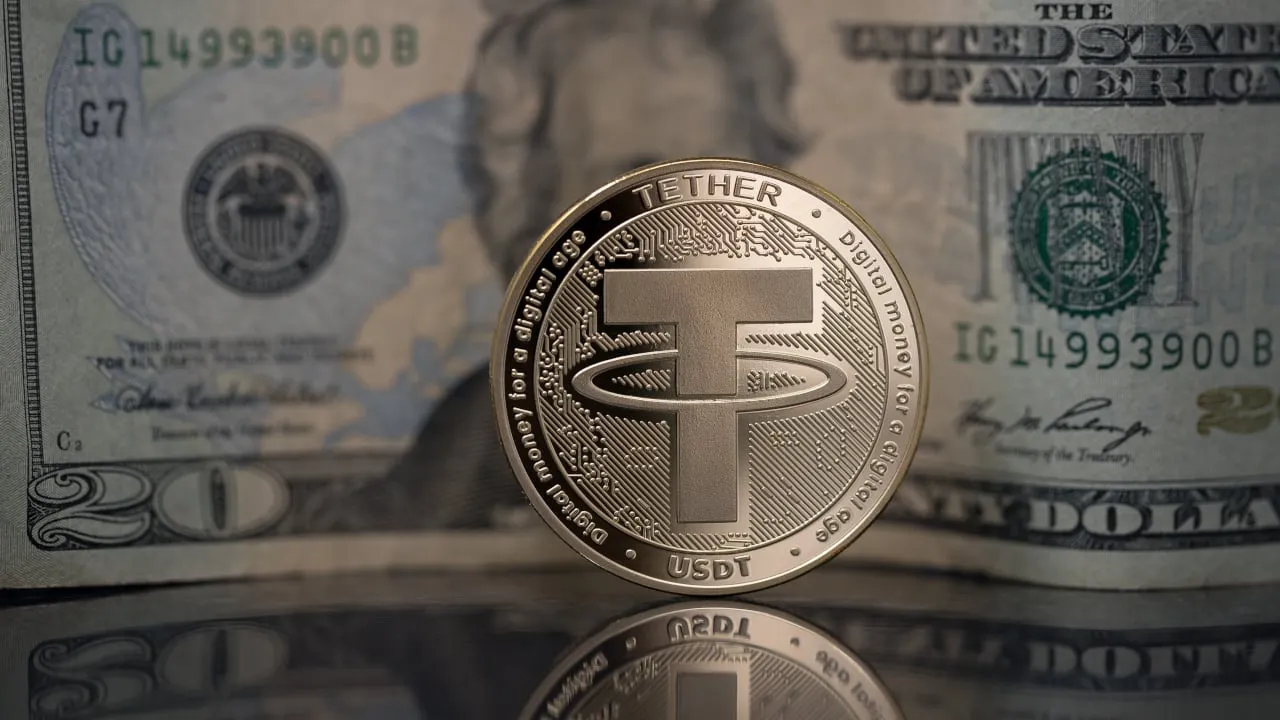BlackRock’s Bitcoin exchange-traded fund (ETF) application was again the talk of the crypto town this week—but this time triggered by its “Tether FUD.”
Although the filing is from June, industry watchers recently pointed out that the world’s biggest fund manager had included warnings about how Tether—and the stablecoin market in general—could negatively impact the Wall Street titan’s Bitcoin ambitions.
Crypto critic and pseudonymous Twitter user @Bitfinexed pointed out that “BlackRock is spreading Tether ‘FUD’,” labeling a section in BlackRock’s filing that asserted that the price of Bitcoin could be affected by stablecoins as seeding "fear, uncertainty, and doubt."
What could BlackRock's endgame be here?
First things first: BlackRock, which has over $9 trillion in assets under management, sent shockwaves through the crypto world when it filed for a spot Bitcoin ETF in June. The prestigious fund manager’s application—and subsequent comments from CEO Larry Fink—has led people to believe that Bitcoin is just a stone’s throw away from massive institutional adoption.
Although the U.S. Securities and Exchange Commission hasn’t yet approved a Bitcoin ETF, experts say it’s only a matter of time.
Every ETF application needs to disclose risks. So, what was the “Tether FUD”?
“While the trust does not invest in stablecoins, it may nonetheless be exposed to risks that stablecoins pose for the bitcoin market and other digital asset markets,” BlackRock’s filing read. “Because a large portion of the digital asset market still depends on stablecoins such as Tether and USDC, there is a risk that a disorderly de-pegging or a run on Tether or USDC could lead to dramatic market volatility in digital assets more broadly.”
Tether mints USDT—the third-largest cryptocurrency after Bitcoin and Ethereum, with a market cap of $87 billion.
USDT is the most-traded digital asset. As a stablecoin—a cryptocurrency backed by a stable asset—it is used to enter and exit trades quickly and without using a traditional bank or fiat currency.
It is especially useful when dollars are restricted or unavailable, particularly in the sphere of DeFi, which seeks to disintermediate banks.
But Tether is controversial: it has been slow to provide documentation to prove that U.S. dollars back USDT, and the entity is not independently audited.
In 2021, Tether agreed to no longer do business in New York after a two-year New York Attorney General investigation found it had “made false statements about the backing” of its stablecoin.
And BlackRock had to disclose this—concerns around the impact a stablecoin collapse like Tether could have on Bitcoin and the crypto market are not overblown: when algorithmic stablecoin Terra UST imploded last year, Bitcoin took a heavy hit—and the rest of the digital asset market followed.
Fierce critics of Tether will continue to doom-monger; they have always said that Tether could harm Bitcoin.
But this is just hypothetical—and BlackRock needed to mention whatever could theoretically happen to the crypto market.
Tether didn’t answer Decrypt’s emailed questions, but VanEck strategy advisor Gabor Gurbacs said on Twitter that there was “not much to read into” the comments from BlackRock.
“ETF issuers do list all risks that they can think of for disclosure,” he said. “The U.S. Dollar itself and banking availability are risks, and so are electric outages and natural disasters.”
He added that mentioning any risk was “prudent practice.”
Daily Debrief Newsletter
Start every day with the top news stories right now, plus original features, a podcast, videos and more.

